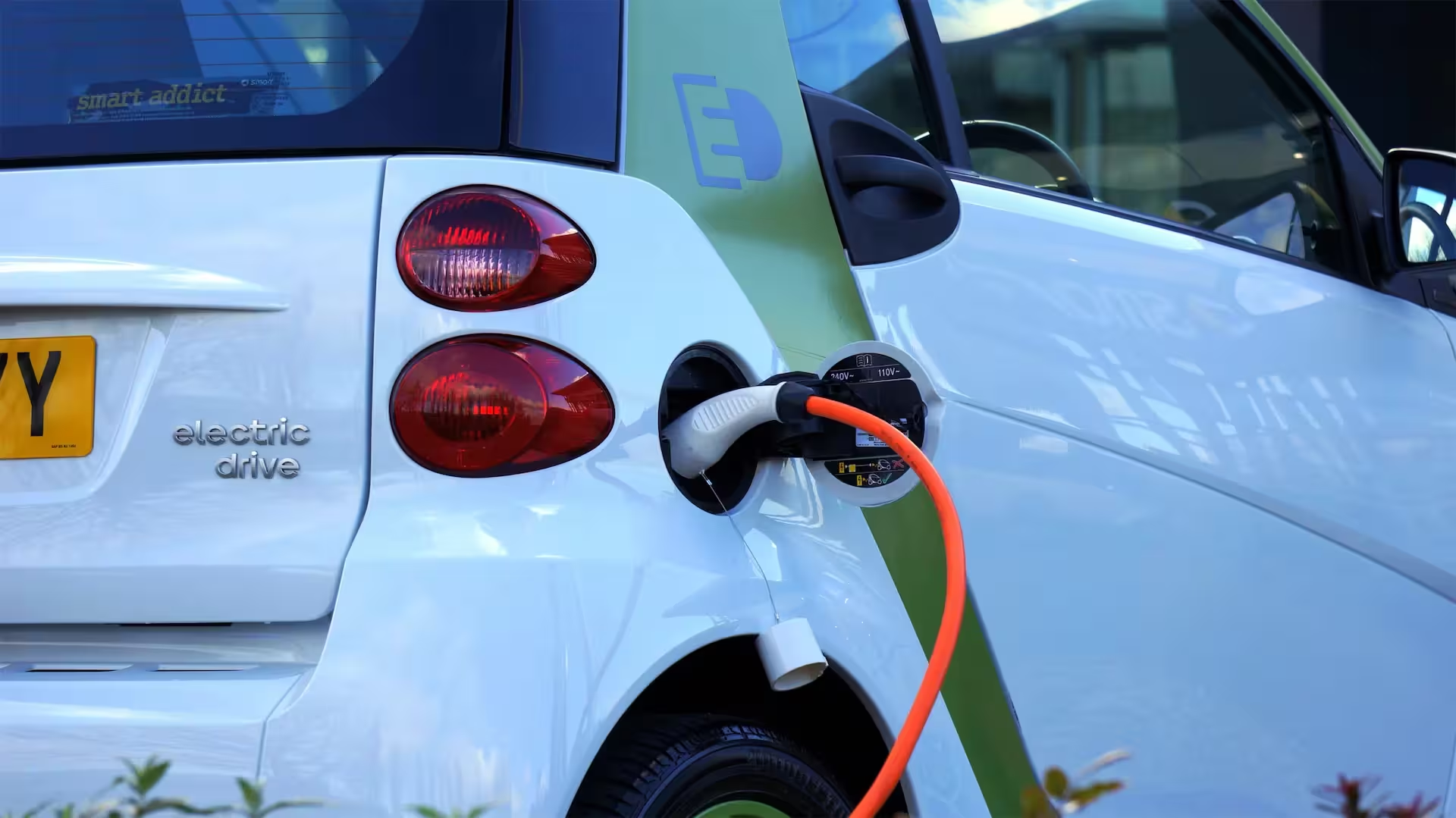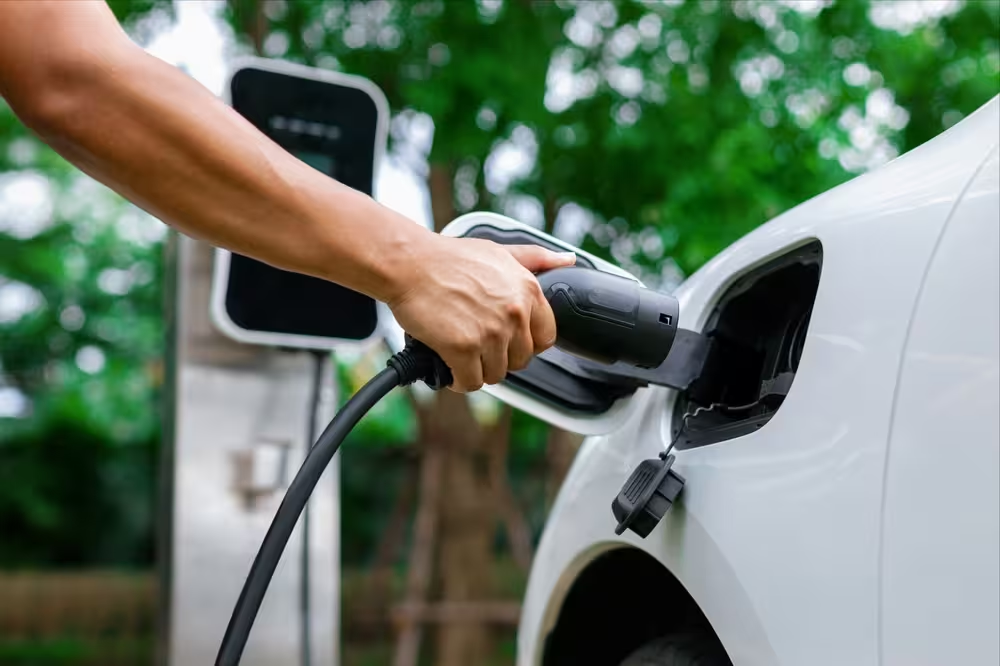EV Market Dynamics
The electrification of mobility is accelerating quickly and turning the automotive industry and other major industries upside down. With electrification the focus shifts away from the engine towards the batteries.

Increasing pace of electrification across industries makes batteries top priority
The electrification of mobility is accelerating quickly and turning the automotive industry and other major industries upside down. With electrification the focus shifts away from the engine towards the batteries.
- Electric mobility is developing at a rapid pace almost doubling the number of new car sales in 2018
- Electrification also spreads to other industries
- Batteries constitute a huge asset value with already over 84 billion € for the predicted 8.4 million EVs in 2025
- Mastery of battery development and management will be essential for successful electrification
This year's IAA, which will be held in Frankfurt from 12 to 22 September, runs under the slogan "Driving Tomorrow". The latest trends and developments in the world of mobility will be presented. Electric mobility will be at the very center of the stage. Unlike autonomous driving, the electrification of entire product portfolios is happening right now as can be clearly seen from the latest sales figures.
This trend is not limited to the automotive industry but has also reached other large and small industries. Construction, agricultural and mining (CAM) equipment are being increasingly electrified and even the aviation industry is heading towards an electric future with air taxis and hybrid forms of flying.
Over 500 million electric passenger vehicles by 2040
In 2018, the global fleet of electric vehicles (EV) exceeded 5.1 million, 2 million more than in the previous year - almost doubling the number of new car sales. J.P. Morgan predicts even greater growth for electrified cars. By 2025 the sales figures are expected to account for 30% of total vehicle sales.
Bloomberg goes even further and expects an electrification of 57% of all passenger’s vehicles – implying over 500 million electric cars, over 30% of the global passenger vehicle fleet. In addition to this, around 40 million commercial EVs are running electric by 2040 according to their predictions.
In general, there are three different types of vehicles, which are summarized under the term EV. Hybrid electric vehicles (HEV) are vehicles with diesel or petrol engine combined with an auxiliary electric motor on the side, which supports the combustion engine. HEVs or mild hybrids are already facing declining demand, a trend which is set to continue. Plugin hybrid electric vehicles (PHEV) are considered a bridge solution that provides the benefits of electric mobility in pollution sensitive areas such as cities but also have the range for long-haul travel. They combine a diesel or petrol engine with an electric one and can be charged via socket or charging station – this means that they can be driven fully electric, alas, carrying the baggage of an additional engine. However, the aim of electric mobility is the complete detachment of combustion engines. Which is where battery electric vehicles (BEV), vehicles powered entirely by an electric motor and a battery, are coming into play.
BEV sales will rise to 8.4 million vehicles accounting for a market share of 7.7% by 2025. While this increase is significant, PHEVs – true to their nature as bridge technology - are forecasted to grow even faster in the next five years. While currently running only at around 3% of global market share, they are expected to reach more than 25 million vehicles or 23% of global sales over the same period.
China is leaping ahead
China continues to be the largest electric vehicle market in the world, followed by Europe and the United States. In 2018, China set a new record with 1.27 million new EVs sold. In contrast to this, Germany can only boast around 68,000 new EVs. In Shenzhen, the showcase city in terms of electrification of public transport, more than 16.000 electric busses are already operated by the Shenzhen Bus Group. Buses that are almost entirely supplied by the also Chinese bus manufacturer BYD. Laughed at, when originally introducing their all-electric strategy, now by far the market leader in this rapidly growing segment. Dr. Stephan Rohr, Co-Founder & Managing Director of TWAICE, only recently visited China and discussed firsthand the challenges of a fully electrified fleet with representatives of the Shenzhen Bus Group.
China is also setting an example with regard to EV only zones. Motorized access to some areas of the major cities is now only possible with zero-emission vehicles. Such concepts will accelerate the expansion of EVs further and will potentially also reach Europe and the rest of the world sooner rather than later to fight the pollution in the inner cities.
Other industries are electrifying even quicker
While much of the talk regarding electrification has revolved around on-road vehicles, new research from IDTechEx Research indicates that off-road electric vehicles may after all be the more dominate marketplace: 15% of CAM (Construction, Agriculture, Manufacturing) vehicles sold today are EV’s but according to the report the majority of CAM vehicles sold by 2029 will be powered electrically.
Showcasing this, electrification was one of the major trends at this year’s construction vehicle fair Bauma in Munich - the largest trade fair in the world. Talk about electrification and digitalization was in focus across all branches of industry: electric drives, networked machines and automated processes are driving the industry forward. All in all: The sector is in a state of upheaval posing particular challenges for the manufacturers.
Electrification in aviation presents another important and exciting development with huge potential. While a hybrid solution is the likely frontrunner for large passenger aircrafts, fully electric solutions are being developed for urban mobility. Plenty of exciting new players are competing with the global champions Airbus, Boeing and co for the best short-haul solution. The German start-up Volocopter, for example, aims to reinvent urban mobility with electric helicopters. Lilium, another German startup, is working on a revolutionary on-demand air taxi based on the electrical “Lilium-Jet”. The traditional players Airbus and Boeing are close up their heels and also developing their own concepts.
Increasing electrification shifts focus towards batteries
Regardless of the industry, the strong trend towards electrification only means one thing: the demand for Lithium-Ion (Li-Ion) batteries is increasing drastically – the most visible proof being the supply shortage of cells. Moreover, the materials used in batteries e.g. lithium and cobalt are rare and expensive resources.
The complexity and the resources cost translate into the high value of batteries, both as a share in the vehicle costs of 30 to 50% and in total with prices ranging from 200 €/kWh in the mass market to over 1,000 €/kWh in specialized applications. Assuming the 8.4 million electric cars in 2025 and a reasonably sized battery of 50kWh, we are already talking about 84 billion € in battery assets. Such an asset requires careful management.
Combines this financial value with the fact that batteries are highly complex electrochemical systems, the challenge for manufacturers and battery owners becomes obvious. Since batteries degrade throughout their life, their performance decreases over time, creating insecurities among the potential owners and users. In consequence, manufacturers provide extensive warranties between eight and 12 years on the batteries taking up most of the financial risk on themselves. Getting the development, design, and operation right is, therefore, a quintessential task for any OEM. Our experience shows that software and services to develop and deploy battery systems more efficiently and sustainably is key.
Sign up for the next live group demo and learn how TWAICE can transform your BESS operations. In just 30 minutes, you’ll get a demo of key features and use cases, and engage with our product experts for a live Q&A.


.avif)

%20(1)%20(1).avif)
.avif)